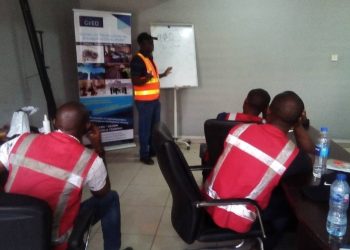This course is designed to help maintenance people identify what the real issue is when a motor burns out and how to prevent it from happening again. It involves understanding the control of the motor as well as the motor itself.


Industrial Motor Controls: Operation, Troubleshooting & Maintenance
Details
Programme Introduction
This course is designed to help maintenance people identify what the real issue is when a motor burns out and how to prevent it from happening again. It involves understanding the control of the motor as well as the motor itself.
Programme Objectives:
Upon completion of this course, students will learn to:
Identify the different types of motors and their appropriate applications
Test for & troubleshoot motor problems
Properly select and replace a motor
Keep a motor properly maintained
Identify & understand symbols used in common control circuit drawings
Use a logical, systematic approach to troubleshooting
Find and fix common control circuit problems
Programme Outline
Fundamentals of Motors
Glossary of Key Motor Terms
Types of motors available and their applications
Test equipment you need for testing and maintaining rotating electrical equipment
Quick checks in the field for troubleshooting rotating electrical equipment
Selecting the best replacement motor
Understanding Motor Nameplate Data
IEC Motor Ratings
Energy Issues and Motors
Tips for selecting Energy-Efficient Motors
Safety Issues for Troubleshooting and Replacing Motors
Hazards of Rotating Electrical Equipment
OSHA Lockout/Tagout Requirements for Electrical Equipment
Determining motor power supplies and voltages
Verifying circuits de-energized – safely and correctly!
The latest Personal Protective Equipment (PPE) requirements
Visual Inspections of Motor Disconnects and control circuit operation
Motor Replacement Procedure
Verification of the safe working conditions
Properly de-terminating motors
Setting replacement motors
Overview of shaft coupling/alignment procedure options
Electrical checks on replacement motors before termination
Verification of proper size line conductors
Determining proper connection scheme using nameplate data
Selecting the best method of motor termination
Lugs and insulation tapes for termination
Termination kits
Methods of verifying proper phase rotation
Lubrication requirements
Sizing fuses and overloads
Final checks prior to re-energizing motor
Electrical, visual, and mechanical checks for startup testing
Motor Maintenance Issues
Testing motor windings
Megohmmeter testing of motors
Modern, state-of-the-art predictive maintenance testing for motors
Bearings and Lubrication
Motor Storage
Determining voltage and current imbalance and its effects
Recommended maintenance practices of NFPA 70B
Sizing and adjusting overloads per the NEC®
Common motor problems and how to find them
Fixes for common motor problems
Fundamentals of Control Circuits
Types of motor control
Symbols for control
Learn to read motor control schematic and ladder diagrams
Learn the basics of PLC ladder logic
Developing a logical, systematic approach to troubleshooting controls
Typical control circuit problems and how to find and fix them
Motor Drives and Special Control Circuit Applications
Energy Management and motor drives
AC and DC drive overview
Motors for Variable Speed Drives
Variable Speed Drive Applications
HVAC applications
Servo motors and drives for manufacturing
Review the operation of modern automation control such as “pick and place” and conveyor drives




